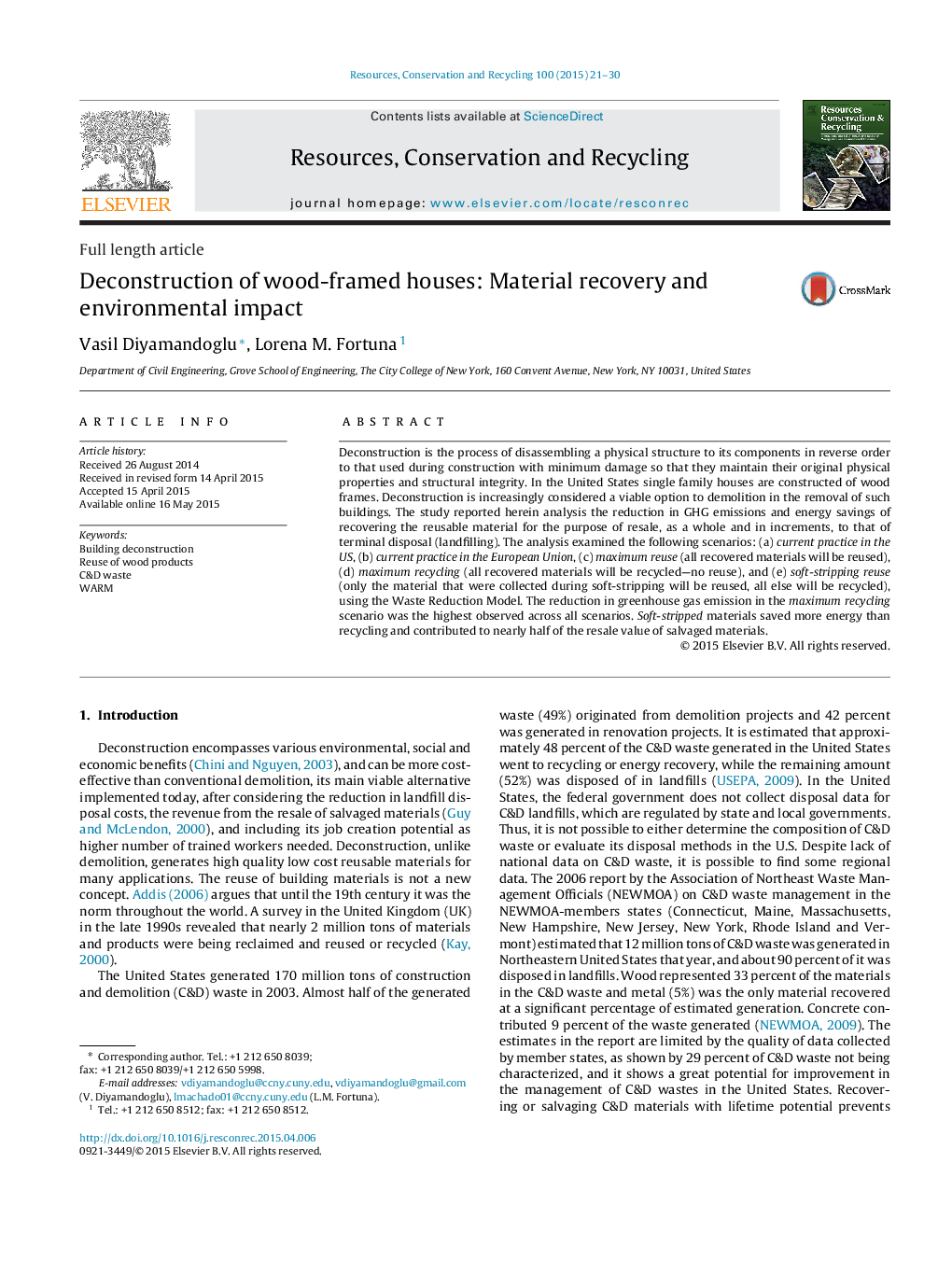| کد مقاله | کد نشریه | سال انتشار | مقاله انگلیسی | نسخه تمام متن |
|---|---|---|---|---|
| 1062872 | 1485689 | 2015 | 10 صفحه PDF | دانلود رایگان |

• Material Recovery from deconstruction of a one family wood framed house.
• Carbon emissions and energy savings in resource recovery from a one story wooden house.
• Implementation of WARM in estimating the environmental impact of deconstruction of a woof frame house.
Deconstruction is the process of disassembling a physical structure to its components in reverse order to that used during construction with minimum damage so that they maintain their original physical properties and structural integrity. In the United States single family houses are constructed of wood frames. Deconstruction is increasingly considered a viable option to demolition in the removal of such buildings. The study reported herein analysis the reduction in GHG emissions and energy savings of recovering the reusable material for the purpose of resale, as a whole and in increments, to that of terminal disposal (landfilling). The analysis examined the following scenarios: (a) current practice in the US, (b) current practice in the European Union, (c) maximum reuse (all recovered materials will be reused), (d) maximum recycling (all recovered materials will be recycled—no reuse), and (e) soft-stripping reuse (only the material that were collected during soft-stripping will be reused, all else will be recycled), using the Waste Reduction Model. The reduction in greenhouse gas emission in the maximum recycling scenario was the highest observed across all scenarios. Soft-stripped materials saved more energy than recycling and contributed to nearly half of the resale value of salvaged materials.
Journal: Resources, Conservation and Recycling - Volume 100, July 2015, Pages 21–30